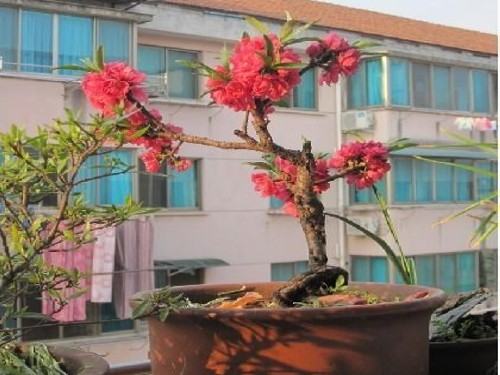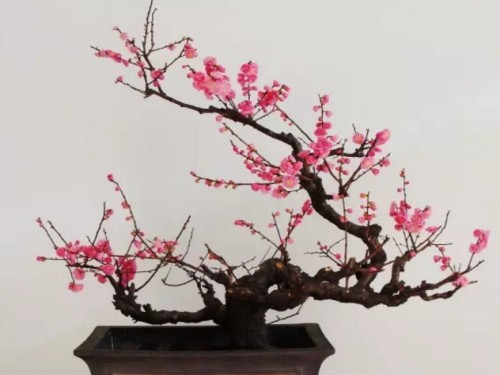How do golden bracts reproduce?
Golden bracts are evergreen subshrubs of the family Cerambycidae, with dilated stem nodes, opposite leaves, long oval leaves and obvious veins due to the yellow spike at the top of the stem. Bracts layer upon layer, and protruding white flowers, shaped like shrimp body and named. The south is used to decorate flower beds. Warm land can be planted in the garden, while the north is used as greenhouse potted flowers, which is an excellent variety of potted flowers. Under the condition of greenhouse, golden bracts can be cut all the year round, but family culture should be done from April to May in spring. Because at this time, the cuttage takes root quickly, is easy to survive, and can blossom in autumn.
Golden bract flower can be carried out mainly in the growing season by cutting, and the best cutting time is in April. Each node of the stem branch of the golden bract flower has about a pair of latent axillary buds, and the axillary buds in the middle of the branches are mature and germinate strongly. Cut cuttings with a length of 3-4cm, cut them in the seedbed or pot, cover them with plastic film or cover with glass, pay attention to watering to keep the substrate moist, take root after a week, sprout and grow after 20 days, and plant in the pot after a month. When putting on the pot, you should choose a robust, opposite double-forked seedling.
The cutting substrate can be mixed with vermiculite and sand, and a small number of cuttings in the family can be loaded into a wide-mouth flowerpot. The cuttings can be buried in a wide-mouth flowerpot with a depth of 1 inch 3 to 1 pound 2, watered thoroughly after cutting, moisturized with plastic film and placed in a shade shed to maintain the proper temperature for rooting at 20 ℃ to 25 ℃. Rooting can take root in 7 to 10 days, and can be transplanted into the pot after 20 days.
Golden bracts should be prepared to cultivate soil before cutting. Potted plants can be mixed with rotten leaves, peat soil and 1 pound 2 vermiculite or 1 pound 3 river sand, and then add a small amount of base fertilizer, which requires looseness, good ventilation and avoid heavy clayey soil.
The cuttings of golden bracts should choose strong, full, short internodes on the plant, cut to grow a section of 9 cm to 12 cm, and the cut should be 0.5 cm below the node, preferably with a sharp knife, even better with a heel. Remove the lower leaves and retain the apical leaves. Cut the vigorous branches, 8 cm to 10 cm long, about 3 to 5 nodes, leaving only 2 to 3 leaves at the end, and the lower incision is preferably 0.2 cm below the node.
When cutting, insert the golden bract cuttings into the soil 3 cm to 4 cm, press your fingers slightly into the base of the soil, make it close to the cultivated soil, and then pour enough water with a fine spray pot and place it in a semi-shady place. After the cuttage is finished, water should be watered frequently and sprayed near the cuttings to keep the soil moist and the air around the cuttings moist. At room temperature from 20 ℃ to 25 ℃, roots can grow in about 20 days, and can develop into larger plants and flowers in autumn.
Time: 2019-06-10 Click:
- Prev

Sowing and Seedling-raising techniques of Prunus mume
In this dry wood and spring in the north in early May, the spring breeze blowing with the spring rain, there is still a rustling chill. Some small flowers are frightened by this cold to show their heads, but the flowers of elm leaf plum probably inherit the character of plum blossoms, stubbornly occupy every branch, contain buds, nourished by the spring rain
- Next

Pruning technique of red plum bonsai
In order to cultivate red plum bonsai with not only luxuriant flowers but also beautiful trees, in addition to careful maintenance and management, artistic processing is essential, and the basic method is pruning and binding. Red plum has strong branching ability and resistance to pruning, and new branches form flower buds in the same year, so after flower fade every year, it is necessary to prune in time and truncate the old flower branches.
Related
- Fuxing push coffee new agricultural production and marketing class: lack of small-scale processing plants
- Jujube rice field leisure farm deep ploughing Yilan for five years to create a space for organic food and play
- Nongyu Farm-A trial of organic papaya for brave women with advanced technology
- Four points for attention in the prevention and control of diseases and insect pests of edible fungi
- How to add nutrient solution to Edible Fungi
- Is there any good way to control edible fungus mites?
- Open Inoculation Technology of Edible Fungi
- Is there any clever way to use fertilizer for edible fungus in winter?
- What agents are used to kill the pathogens of edible fungi in the mushroom shed?
- Rapid drying of Edible Fungi

